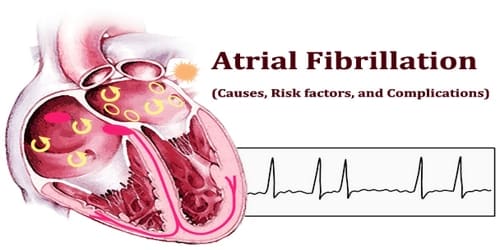Being overweight or obese during youth is considered a risk factor for developing blood clots as an adult. Excess weight can lead to changes in blood pressure, cholesterol levels, and insulin resistance, all of which can contribute to the development of blood clots.
Overweight in childhood and early adulthood is a distinct risk factor for blood clots later in life, according to a study from the University of Gothenburg. The study is based on the early BMI history of over 37,000 men, as well as information about their adult thrombi, if any.
The link between obesity and blood clots is well established. However, it is unclear how much influence a high BMI in childhood and puberty has. The study’s goal was to determine the links between childhood BMI and subsequent thrombi.
Thrombi usually start in the legs, usually in a blood vessel in the calf. Common symptoms include swelling, pain, and redness. Clots are rarely dangerous if treated early. However, if one breaks loose, is borne to the lungs in the bloodstream, and adheres to the vessel wall there, the resulting “pulmonary embolism” may be life-threatening.
The present study comprises 37,672 men in Sweden, born between 1945 and 1961. It is based on information about height, weight, and BMI from the men’s records, first from school health care services (at the age of 8 years) and, second, from medical examinations on enrollment in the Armed Services (at age 20), along with register data on any blood clots up to age 62 on average.
Our findings show that being overweight as a child and as a young adult increases the risk of venous blood clots later in life. The latter, being overweight as young adults, proved to be a more influential factor than being overweight as children.
Lina Lilja
Distinctly elevated thrombus risk
According to the findings, which have been published in the Journal of Internal Medicine, BMI at both ages 8 and 20, independently, can be linked to venous blood clots. These can occur in the leg (deep vein thrombosis, DVT) or the lung (pulmonary embolism).
Two groups of adults were found to have a significantly increased risk of venous thrombosis. The first group included people who were overweight as children and young adults, while the second group included people who were normal weight as children and only became overweight as adults.
Moreover, being overweight in both childhood and young adulthood was found to raise the risk of arterial thrombi – that is, clots resulting from constricted blood vessels with fatty deposits and inflammation. Since there were few cases of arterial blood clots in the study, however, further studies are needed to confirm these findings. All comparisons in the study were made with the control group, whose weight was normal at both 8 and 20 years of age.

Overweight in puberty an important factor
Lina Lilja, a doctoral student at Sahlgrenska Academy, University of Gothenburg, and pediatrician, is the study’s first and corresponding author. She worked at the Kungshöjd pediatric clinic in Gothenburg at the time of the study. She is now a senior physician in child health care in Västra Götaland Region.
“Our findings show that being overweight as a child and as a young adult increases the risk of venous blood clots later in life. The latter, being overweight as young adults, proved to be a more influential factor than being overweight as children” Lilja observes.
Professor and senior physician Claes Ohlsson and associate professor and senior physician Jenny Kindblom, both of Sahlgrenska Academy at the University of Gothenburg and Sahlgrenska University Hospital, were senior authors of the study. “Obesity and overweight during puberty seem to have a marked impact on a person´s future risks of venous thrombi,” Kindblom concludes.
Furthermore, excess body fat can lead to inflammation and damage to the lining of blood vessels, which can also increase the risk of blood clots. These changes can occur during youth and continue to affect the body throughout adulthood. It’s important for individuals to maintain a healthy weight through regular exercise and a balanced diet to reduce the risk of developing blood clots and other related health issues.
















